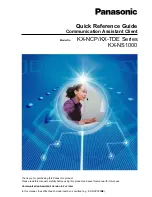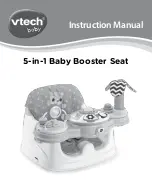
GB
I
RIMOZIONE DELLA PIASTRA RAPIDA DALLA TESTA
Allentare la leva di blocco “M” (fig 1), quindi tenerla premuta verso il basso. La
piastra rapida “L” si estrae da sopra la testa (non scorre fuori dalla testa come
altre piastre video Manfrotto): ruotarla in modo che il lato lungo della piastra
rivolto alla leva “M” possa uscire dalla testa, quindi rimuovere del tutto la piastra.
FISSAGGIO DELLA PIASTRA RAPIDA AD UNA VIDEOCAMERA
&
La piastra rapida (fig. 5) ha una vite da 1/4” “K”, una vite da 3/8” “S”, un tappo di
gomma “AF” e un e un pernino antirotazione “P”. Sono tutti forniti smontati.
Verificare la misura del foro di fissaggio al treppiedi previsto sulla videocamera,
quindi selezionare la vite corretta “K” o “S” per fissare la piastra rapida (fig 5).
Se la videocamera dispone di foro antirotazione, inserire il pernino antirotazione
“P” nella piastra come mostrato in figura 5. Allineare la videocamera sulla piastra
“L” verificando che il pernino “P” sia correttamente inserito nella videocamera
prima di stringere la piastra.
Fissare la videocamera sulla piastra “L” (fig. 6) serrando la vite “K” o “S” nel foro
filettato della videocamera. Per stringere la vite si può usare una moneta, ma
SENZA APPLICARE FORZA ECCESSIVA.
Se la videocamera non dispone di foro antirotazione, allineare l’obiettivo della
videocamera con il simbolo a freccia “LENS” sul fondo della piastra “L” prima di
stringere a fondo.
MONTAGGIO DELLA VIDEOCAMERA SULLA TESTA
Portare la videocamera sulla testa, angolandola in modo che la piastra “L” si
inserisca nella testa, facendo entrare prima il lato lungo più lontano dalla leva
“M”. Quindi spingere a fondo in modo che la piastra entri del tutto e la leva “M”
scatti in posizione di blocco.
BILANCIAMENTO DELLA VIDEOCAMERA SULLA TESTA
Per trovare il punto di bilanciamento della videocamera:
- livellare la testa sul treppiedi facendo riferimento alla livella a bolla “C” (fig. 1)
- allentare la leva “U” (fig. 8)
4
5
6
7
8
REMOVING THE QUICK RELEASE PLATE FROM THE HEAD
Loosen lever “M” (fig 1), then hold it pressed downwards. Quick release plate “L”
is extracted from the top of the head (it doesn’t slide out of the head like other
Manfrotto video plates): turn it so that the long edge of the plate closest to lever
“M” lifts out of the head, then remove the plate altogether.
FITTING THE QUICK RELEASE PLATE TO A CAMCORDER
&
The quick release plate (fig. 5) has a 1/4” camera screw “K”, a 3/8” camera screw
“S”, a rubber cap “AF” and an anti-rotation pin “P”. All are supplied unmounted.
Check the size of the tripod attachment hole on your camcorder, and select the
correct screw “K” or “S” to fit to the quick release plate (fig. 5).
If the camcorder also has an anti-rotation hole, insert the anti-rotation pin “P” into
the plate as shown in figure 5. Align the camera on plate “L” ensuring the pin “P”
is seated correctly in the camera before fastening the plate.
Fix the camcorder onto plate “L” (fig. 6) by tightening screw “K” or “S” into the
camcorder’s threaded hole. You can use a coin to tighten the screw, but WITH-
OUT APPLYING FORCE.
If the camcorder doesn’t have an anti-rotation hole, align the camcorder lens with
the arrow marked “LENS” on the underside of camera plate “L” before tightening
fully.
ATTACHING THE CAMERA TO THE HEAD
Hold the camcorder above the head, and angle it so that plate “L” slots into the
head, with the long edge furthest from lever “M” dropping in first. Then push
down so that the plate drops in fully, and lever “M” clicks shut.
BALANCING THE CAMERA ON THE HEAD
To find the balance point for the camcorder:
- level the head on the tripod using spirit level “C” (fig. 1) as a reference
- loosen lever “U” (fig. 8)
- slide the camcorder backwards and forwards until you find the position in
which the head remains still with the camera level
4
5
6
7
8
7








































